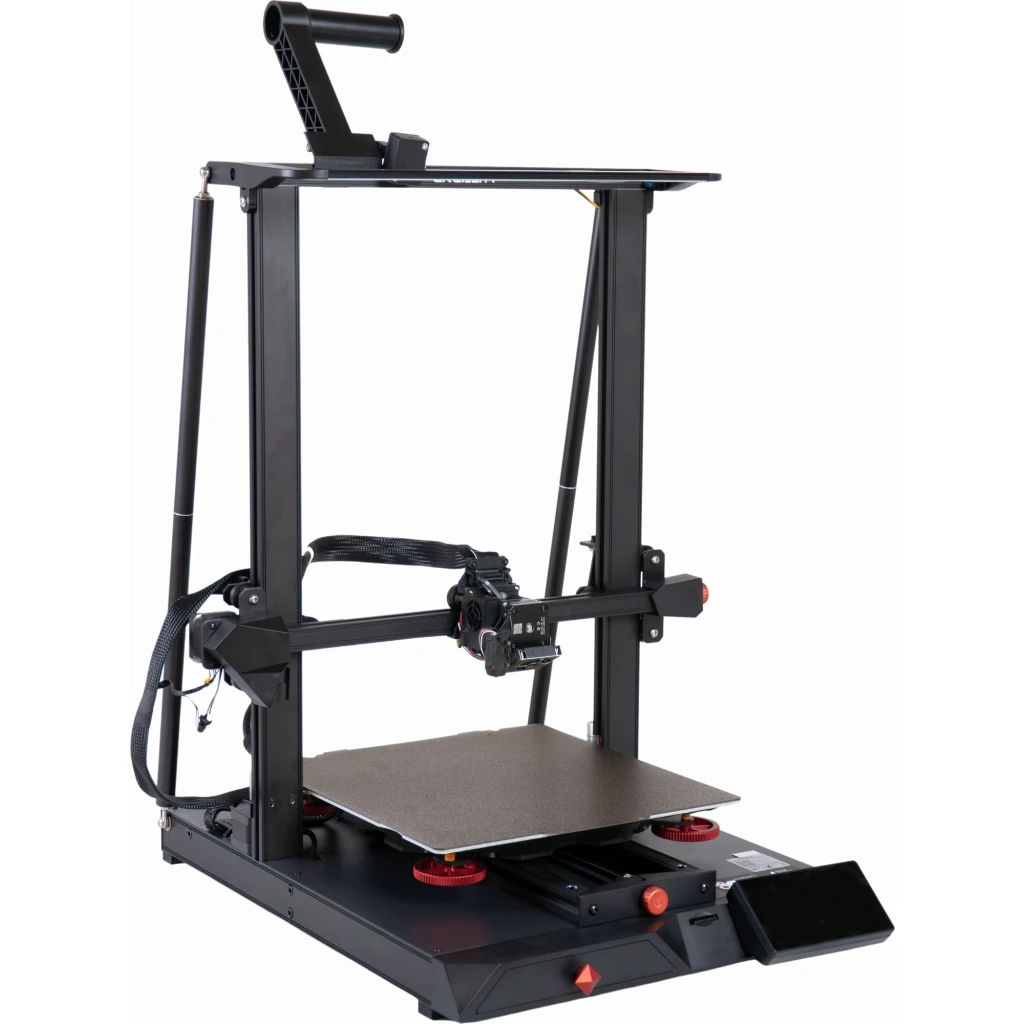Compare CR 10 Smart Pro vs H2D
Comparison between the best 3D printers
Choose the best 3D printer at the best price. The cheapest 3D printers are here.
Buy a 3D printer here with 3D Fila.
 |
 |
|
| Model | CR 10 Smart Pro[BUY CR 10 Smart Pro] |
H2D |
| Printing Material | Filament | Filament |
| Buy Filament for Creality 3D CR 10 Smart Pro | Buy Filament forBambu Lab H2D | |
| Estimated price | $900,00 | $1899,00 |
| Manufacturer | Creality 3D | Bambu Lab |
| Release Year | 2020 | 2025 |
| Print Volume [mm] | 300x300x400 | 350x320x325 |
| Printer Size [mm] | 578x522x648 | 492x514x626 |
| Weight [kg] | 13,6 | 42,3 |
| Power Loss Recovery | YES | YES |
| Enclosed printer | NO | YES |
| Bed Leveling | Manual | Automatic |
| Filament End Sensor | YES | YES |
| Bed type | Heated | Heated |
| Power supply system | Bowden | Direct Drive |
| Standard nozzle | 0,4 | 0,4 |
| Maximum Nozzle Temperature [°C] | 300 | 350 |
| Maximum Bed Temperature [°C] | 100 | 120 |
| Maximum printing speed [mm/s] | 50 | 600 |
| Filament holder | YES | YES |
| Camera for supervision | YES | YES |
| Recommended filaments | PLA, PETG, Tritan, Flex, ABS | PLA, PETG, ABS, ASA, TPU, PVA, Nylon (PA) |
| Recommended slicers | Cura, Simplify, Slic3r, IdeaMaker | Bambu Studio |
| Maximum Resolution [mm] | 0,1 | 0,01 |
| Processor | ||
| Display | Display touchscreen 4,3'' | Touchscreen 5'' |
| Power Supply | 110/220V / 350W | |
| Connectivity | SD / USB / Wi-Fi / Ethernet | Wifi, Bambu bus, Cartão SD |
| Operating systems | Windows, Mac, Linux | Windows, Mac, Linux |
| Date of registration in the system | 2022-11-04 | 2025-03-31 |
| Release date | 2020 | 2025 |
| Extra features | Creality's CR-10 Smart Pro printer offers a large 300x300x400mm build volume, Sprite Pro direct extruder for multiple materials, CR Touch auto-leveling, PEI magnetic bed, 4.3" touchscreen, LED lighting, and Creality Cloud connectivity. Some areas of improvement include the use of brass spindle nuts and tinned wires. | Bambu Labs H2D combines high-speed 3D printing with a chamber heated up to 65 °C, dual extrusion with automatic nozzle switching, an AMS for filament drying and exchange, and AI sensors that detect failures. It offers optional laser and digital cutting capabilities, features intelligent calibration through computer vision, vibration control, enhanced fire safety, and real-time camera monitoring. |
| Support for multiple colors and materials (AMS and CFS) | NO | YES |
Notes * |
||
| Cost-benefit | 6 / 10 | 7 / 10 |
| Hardware | 2.5 / 10 | 8 / 10 |
| Tela | . | . |
| Print volume | 4 / 10 | 4 / 10 |
| Performance | 1 / 10 | 5 / 10 |
| [BUY CR 10 Smart Pro] |
Conclusion |
| In conclusion, when comparing the CR 10 Smart Pro and the Bambu Lab H2D, several key factors emerge that can help potential buyers decide which 3D printer best suits their needs. The CR 10 Smart Pro is a more budget-friendly option, ideal for hobbyists or beginners looking to experiment with various materials. Its features such as a large build volume, camera supervision, and user-friendly touchscreen make it accessible for users who may not need the highest-end specifications. However, it falls short in terms of advanced features, including automatic bed leveling and multi-material support. On the other hand, the Bambu Lab H2D, despite its higher price tag, offers cutting-edge technology that justifies the investment for professionals or serious enthusiasts. Its capabilities, such as high-speed printing, dual extrusion, and enhanced AI features for failure detection, set it apart as a versatile machine for complex projects. The automatic nozzle switching, intelligent calibration, and superior temperature management facilitate a more streamlined and efficient printing experience. Ultimately, the choice between the two printers rests on the user's specific requirements and budget. For those prioritizing cost-effectiveness and straightforward functionality, the CR 10 Smart Pro is a solid choice. Conversely, for users seeking advanced features and exceptional performance, the investment in the Bambu Lab H2D may be worthwhile. |

